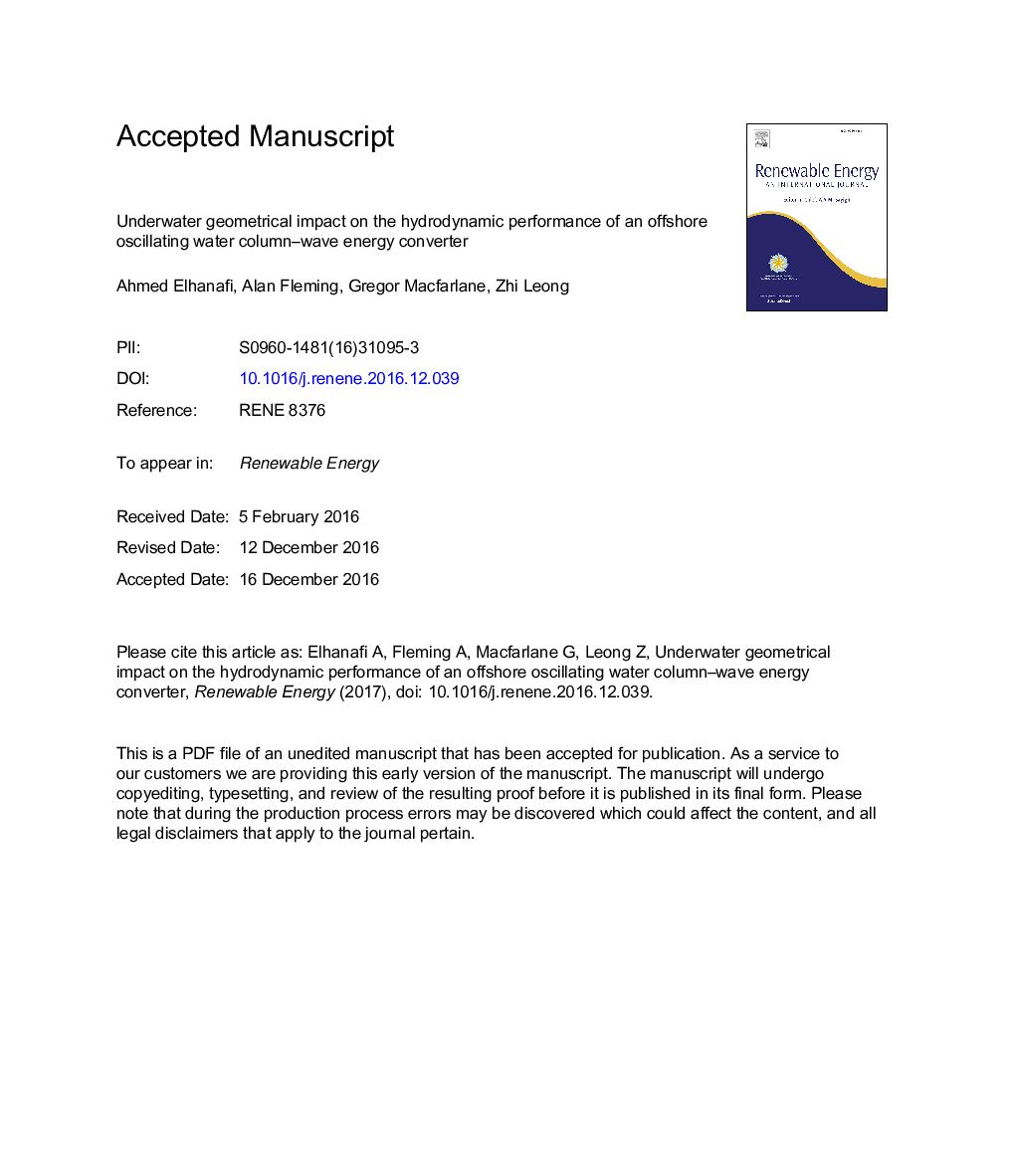| Article ID | Journal | Published Year | Pages | File Type |
|---|---|---|---|---|
| 4926431 | Renewable Energy | 2017 | 45 Pages |
Abstract
Understanding the hydrodynamic performance of offshore Oscillating Water Column (OWC) devices is essential for assisting the development and optimization processes. The chamber underwater geometry is one of the paramount design aspects that strongly affect the wave-OWC interactions. This paper utilizes a well-validated two-dimensional, fully nonlinear Computational Fluid Dynamics (CFD) model to investigate the impact the underwater front and rear lips have on the hydrodynamic performance of an offshore stationary OWC. An extensive campaign of numerical simulations is performed to discover the relevance of the front and rear lip submergence and thickness to OWC performance. The key finding is that the overall hydrodynamic efficiency can be significantly improved over a broad frequency bandwidth by selecting suitable values for both the submergence ratio of asymmetric lips and the lip thickness. The device that is capable of absorbing a large amount of the incoming wave energy provides the maximum power extraction efficiency and the maximum energy losses. The optimal combination achieved a peak efficiency exceeding 0.79, which represents a massive enhancement over more simplistic, but commonly accepted, geometries that returned peak efficiencies of approximately 0.30.
Related Topics
Physical Sciences and Engineering
Energy
Renewable Energy, Sustainability and the Environment
Authors
Ahmed Elhanafi, Alan Fleming, Gregor Macfarlane, Zhi Leong,
